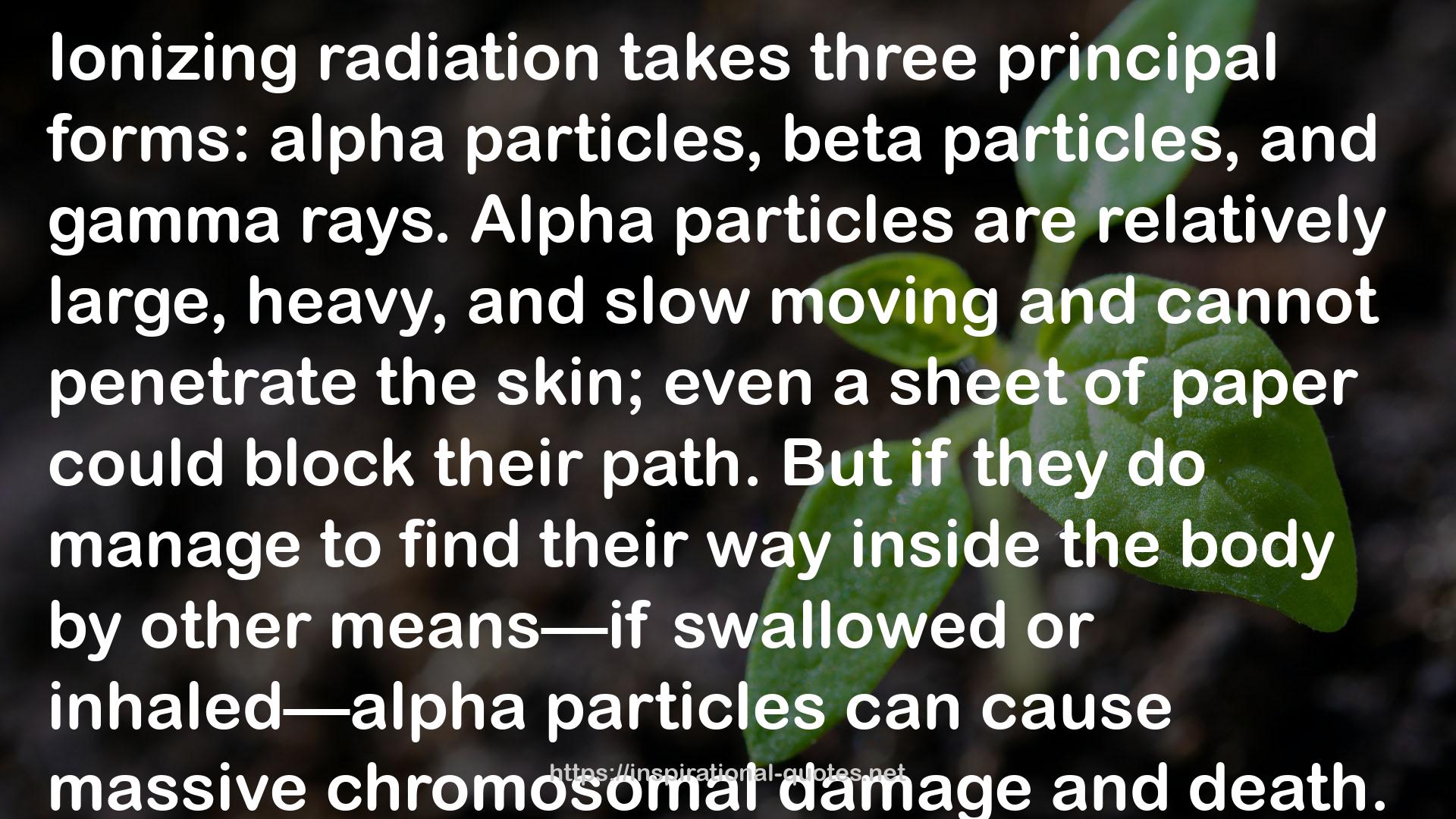" Ionizing radiation takes three principal forms: alpha particles, beta particles, and gamma rays. Alpha particles are relatively large, heavy, and slow moving and cannot penetrate the skin; even a sheet of paper could block their path. But if they do manage to find their way inside the body by other means—if swallowed or inhaled—alpha particles can cause massive chromosomal damage and death. Radon 222, which gathers as a gas in unventilated basements, releases alpha particles into the lungs, where it causes cancer. Polonium 210, a powerful alpha emitter, is one of the carcinogens in cigarette smoke. It was also the poison slipped into the cup of tea that killed former FSB agent Alexander Litvinenko in London in 2006. Beta particles are smaller and faster moving than alpha particles and can penetrate more deeply into living tissue, causing visible burns on the skin and lasting genetic damage. A piece of paper won’t provide protection from beta particles, but aluminum foil—or separation by sufficient distance—will. Beyond a range of ten feet, beta particles can cause little damage, but they prove dangerous if ingested in any way. Mistaken by the body for essential elements, beta-emitting radioisotopes can become fatally concentrated in specific organs: strontium 90, a member of the same chemical family as calcium, is retained in the bones; ruthenium is absorbed by the intestine; iodine 131 lodges particularly in the thyroid of children, where it can cause cancer. Gamma rays—high-frequency electromagnetic waves traveling at the speed of light—are the most energetic of all. They can traverse large distances, penetrate anything short of thick pieces of concrete or lead, and destroy electronics. Gamma rays pass straight through a human being without slowing down, smashing through cells like a fusillade of microscopic bullets. Severe exposure to all ionizing radiation results in acute radiation syndrome (ARS), in which the fabric of the human body is unpicked, rearranged, and destroyed at the most minute levels. Symptoms include nausea, vomiting, hemorrhaging, and hair loss, followed by a collapse of the immune system, exhaustion of bone marrow, disintegration of internal organs, and, finally, death. "
― Adam Higginbotham , Midnight in Chernobyl: The Untold Story of the World's Greatest Nuclear Disaster
